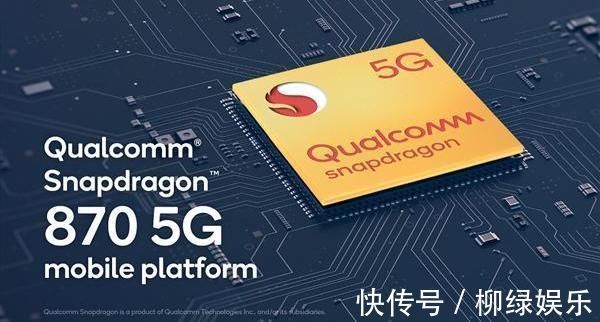RecyclerView系列|理解RecyclerView(五)—RecyclerView的绘制流程
前言:做人如果没有梦想,那和咸鱼有什么区别。????????——《少林足球》一、概述 ??上一篇文章对RecyclerView中实现了如何高度自定义点击事件、万能ViewHolder、万能适配器的封装和使用。最开始就提到,RecyclerView支持各种各样的布局效果,其核心关键在于RecyclerView.LayoutManager中,使用时我们是需要
setLayoutManager()设置布局管理器的。RecyclerView已经将一部分功能抽离出来,在布局管理器中另外处理,也方便开发者自行拓展。LayoutManager就是负责RecyclerView的测量和布局以及itemView的回收和复用。今天这里主要结合LinearLayoutManager来分析RecyclerView的绘制流程。RecyclerView提供了三中布局管理器:
- LinearLayoutManager????? 以列表的方式展示item,有水平方向RecyclerView.HORIZONTAL和垂直方向RecyclerView.VERTICAL;
- GridLayoutManager?????? 以网格的方式展示item,有水平方向和垂直方向;
- StaggeredGridLayoutManager ? 以瀑布流的方式展示item,有水平方向和垂直方向。
温馨提示:本文源码基于androidx.recyclerview:recyclerview:1.2.0-alpha01
二、RecyclerView的绘制三个步骤 ??RecyclerView设置布局管理器,这一步是必要的,用什么样的LayoutManager来绘制RecyclerView,不然RecyclerView也不知道怎么绘制。
recyclerView.setLayoutManager(manager);
从设置布局管理器方法入手,
setLayoutManager()设置布局管理器给RecyclerView使用:public void setLayoutManager(@Nullable LayoutManager layout) {
if (layout == mLayout) {//和之前的管理器一样则直接return
return;
}
stopScroll();
//停止滚动
if (mLayout != null) {//每次设置layoutManager都重新设置recyclerView的初始参数,动画回收view等
if (mItemAnimator != null) {
mItemAnimator.endAnimations();
//结束动画
}
mLayout.removeAndRecycleAllViews(mRecycler);
//移除回收所有itemView
mLayout.removeAndRecycleScrapInt(mRecycler);
//移除回收所有已经废弃的itemView
mRecycler.clear();
//清除所有缓存mLayout.setRecyclerView(null);
//重置RecyclerView
mLayout = null;
} else {
mRecycler.clear();
}
·······
mLayout.setRecyclerView(this);
//LayoutManager与RecyclerView关联
mRecycler.updateViewCacheSize();
//更新缓存大小
requestLayout();
//请求重绘
}
这里首先做了重置回收工作,然后LayoutManager与RecyclerView关联起来,最后请求重绘。这里调用了请求重绘
requestLayout()方法,那么说明每次设置layoutManager都会执行View树的绘制,那么就会重走RecyclerView的onMeasure()、onLayout()、onDraw()绘制三部曲。public void requestLayout() {
if (mRecyclerView != null) {
mRecyclerView.requestLayout();
//请求重绘
}
}
2.1 onMeasure()
我们来看看RecyclerView的
onMeasure()方法:@Override
protected void onMeasure(int widthSpec, int heightSpec) {
if (mLayout == null) {//如果mLayout为空则采用默认测量,然后结束
defaultOnMeasure(widthSpec, heightSpec);
return;
}
if (mLayout.mAutoMeasure) {//如果为自动测量,默认为true
final int widthMode = MeasureSpec.getMode(widthSpec);
final int heightMode = MeasureSpec.getMode(heightSpec);
mLayout.onMeasure(mRecycler, mState, widthSpec, heightSpec);
//测量RecyclerView的宽高
//当前RecyclerView的宽高是否为精确值
final boolean measureSpecModeIsExactly =
widthMode == MeasureSpec.EXACTLY && heightMode == MeasureSpec.EXACTLY;
if (measureSpecModeIsExactly || mAdapter == null) {//如果RecyclerView的宽高为精确值或者mAdapter为空,则结束
return;
}
//RecyclerView的宽高为wrap_content时,即measureSpecModeIsExactly = false则进行测量
//因为RecyclerView的宽高为wrap_content时,需要先测量itemView的宽高才能知道RecyclerView的宽高
if (mState.mLayoutStep == State.STEP_START) {//还没测量过
dispatchLayoutStep1();
//1.适配器更新、动画运行、保存当前视图的信息、运行预测布局
}
dispatchLayoutStep2();
//2.最终实际的布局视图,如果有必要会多次运行
//根据itemView得到RecyclerView的宽高
mLayout.setMeasuredDimensionFromChildren(widthSpec, heightSpec);
}
}
onMeasure()主要是RecyclerView宽高测量工作,主要有两种情况:- (1)当RecyclerView的宽高为match_parent或者精确值时,即
measureSpecModeIsExactly = true,此时只需要测量自身的宽高就知道RecyclerView的宽高,测量方法结束; - (2)当RecyclerView的宽高为wrap_content时,即
measureSpecModeIsExactly = false,会往下执行dispatchLayoutStep1()和dispatchLayoutStep2(),就是遍历测量ItemView的大小从而确定RecyclerView的宽高,这种情况真正的测量操作都是在dispatchLayoutStep2()中完成。
dispatchLayoutStep1()和dispatchLayoutStep2()下面会讲解到。2.2 onLayout()
在
onLayout()方法中, 直接调用dispatchLayout()方法布局:@Override
protected void onLayout(boolean changed, int l, int t, int r, int b) {
TraceCompat.beginSection(TRACE_ON_LAYOUT_TAG);
dispatchLayout();
//直接调用dispatchLayout()方法布局
TraceCompat.endSection();
mFirstLayoutComplete = true;
}
dispatchLayout()是layoutChildren()的包装器,它处理由布局引起的动态变化:void dispatchLayout() {
······
mState.mIsMeasuring = false;
//设置RecyclerView布局完成状态,前面已经设置预布局完成了。
if (mState.mLayoutStep == State.STEP_START) {//如果没在OnMeasure阶段提前测量子ItemView
dispatchLayoutStep1();
//布局第一步:适配器更新、动画运行、保存当前视图的信息、运行预测布局
mLayout.setExactMeasureSpecsFrom(this);
dispatchLayoutStep2();
} else if (mAdapterHelper.hasUpdates() || mLayout.getWidth() != getWidth()
|| mLayout.getHeight() != getHeight()) {//前两步完成测量,但是因为大小改变不得不再次运行下面的代码
mLayout.setExactMeasureSpecsFrom(this);
dispatchLayoutStep2();
//布局第二步:最终实际的布局视图,如果有必要会多次运行
} else {
mLayout.setExactMeasureSpecsFrom(this);
}
dispatchLayoutStep3();
//布局第三步:最后一步的布局,保存视图动画、触发动画和不必要的清理。
}
可以看到
dispatchLayout()和onMeasure()阶段中一样选择性地进行测量布局的三个步骤:- 1、如果没在onMeasure阶段提前测量子ItemView,即RecyclerView宽高为
match_parent或者精确值时,调用dispatchLayoutStep1()和dispatchLayoutStep2()测量itemView宽高; - 2、如果在onMeasure阶段提前测量子ItemView,但是子视图发生了改变或者期望宽高和实际宽高不一致,则会调用
dispatchLayoutStep2()重新测量; - 3、最后都会执行
dispatchLayoutStep3()方法。
dispatchLayoutStep1()主要是进行预布局,适配器更新、动画运行、保存当前视图的信息等工作;private void dispatchLayoutStep1() {
mState.assertLayoutStep(State.STEP_START);
fillRemainingScrollValues(mState);
mState.mIsMeasuring = false;
startInterceptRequestLayout();
//拦截布局请求
mViewInfoStore.clear();
//itemView信息清除
onEnterLayoutOrScroll();
//测量和分派布局时,更新适配器和计算那种类型要运行的动画
processAdapterUpdatesAndSetAnimationFlags();
saveFocusInfo();
//保存焦点信息
mState.mTrackOldChangeHolders = mState.mRunSimpleAnimations && mItemsChanged;
mItemsAddedOrRemoved = mItemsChanged = false;
mState.mInPreLayout = mState.mRunPredictiveAnimations;
mState.mItemCount = mAdapter.getItemCount();
findMinMaxChildLayoutPositions(mMinMaxLayoutPositions);
//找到可绘制itemView最小最大positionif (mState.mRunSimpleAnimations) {
//获得界面上可以显示的个数
int count = mChildHelper.getChildCount();
for (int i = 0;
i < count;
++i) {
final ViewHolder holder = getChildViewHolderInt(mChildHelper.getChildAt(i));
//动画信息
final ItemHolderInfo animationInfo = mItemAnimator
.recordPreLayoutInformation(mState, holder,
ItemAnimator.buildAdapterChangeFlagsForAnimations(holder),
holder.getUnmodifiedPayloads());
//保存holder和动画信息到预布局中
mViewInfoStore.addToPreLayout(holder, animationInfo);
}
}
//运行与布局,将会使用旧的item的position,布局管理器布局所有
if (mState.mRunPredictiveAnimations) {
//保存旧的管理器可以运行的逻辑
saveOldPositions();
final boolean didStructureChange = mState.mStructureChanged;
mState.mStructureChanged = false;
//布局itemView
mLayout.onLayoutChildren(mRecycler, mState);
mState.mStructureChanged = didStructureChange;
}
stopInterceptRequestLayout(false);
//回复绘制锁定
mState.mLayoutStep = State.STEP_LAYOUT;
}
(2)
dispatchLayoutStep2()表示对最终状态的视图进行实际布局:private void dispatchLayoutStep2() {
startInterceptRequestLayout();
//拦截请求布局
onEnterLayoutOrScroll();
//设置布局状态和动画状态
mState.assertLayoutStep(State.STEP_LAYOUT | State.STEP_ANIMATIONS);
mAdapterHelper.consumeUpdatesInOnePass();
mState.mItemCount = mAdapter.getItemCount();
mState.mDeletedInvisibleItemCountSincePreviousLayout = 0;
//预布局完成,开始布局itemView
mState.mInPreLayout = false;
mLayout.onLayoutChildren(mRecycler, mState);
······
stopInterceptRequestLayout(false);
//停止拦截布局请求
}
(3)
dispatchLayoutStep3()是布局的最后一步,保存view的动画信息,执行动画,和一些必要的清理工作:private void dispatchLayoutStep3() {
mState.assertLayoutStep(State.STEP_ANIMATIONS);
startInterceptRequestLayout();
//开始拦截布局请求mState.mLayoutStep = State.STEP_START;
//布局开始状态
if (mState.mRunSimpleAnimations) {
//步骤3:找出事情现在的位置,并处理更改动画。
//反向遍历列表,因为我们可能会在循环中调用animateChange,这可能会删除目标视图持有者。
for (int i = mChildHelper.getChildCount() - 1;
i >= 0;
i--) {
ViewHolder holder = getChildViewHolderInt(mChildHelper.getChildAt(i));
final ItemHolderInfo animationInfo = mItemAnimator.recordPostLayoutInformation(mState, holder);
ViewHolder oldChangeViewHolder = mViewInfoStore.getFromOldChangeHolders(key);
//运行一个变更动画。如果一个项目被更改,但是更新后的版本正在消失,则会产生冲突的情况。
//由于标记为正在消失的视图可能会超出界限,所以我们运行一个change动画。两个视图都将在动画完成后自动清除。
//另一方面,如果是相同的视图持有者实例,我们将运行一个正在消失的动画,因为我们不会重新绑定更新的VH,除非它是由布局管理器强制执行的。//运行消失动画而不是改变
mViewInfoStore.addToPostLayout(holder, animationInfo);
final ItemHolderInfo preInfo = mViewInfoStore.popFromPreLayout(oldChangeViewHolder);
//我们添加和删除,这样任何的布置信息都是合并的
mViewInfoStore.addToPostLayout(holder, animationInfo);
ItemHolderInfo postInfo = mViewInfoStore.popFromPostLayout(holder);
mViewInfoStore.addToPostLayout(holder, animationInfo);
}//处理视图信息列表和触发动画
mViewInfoStore.process(mViewInfoProcessCallback);
}
//回收废弃的视图
mLayout.removeAndRecycleScrapInt(mRecycler);
//重置状态
mState.mPreviousLayoutItemCount = mState.mItemCount;
mDataSetHasChangedAfterLayout = false;
//清除mChangedScrap中的数据
mRecycler.mChangedScrap.clear();
mRecycler.updateViewCacheSize();
//更新缓存大小mLayout.onLayoutCompleted(mState);
//布局完成状态
onExitLayoutOrScroll();
stopInterceptRequestLayout(false);
//停止拦截布局请求
mViewInfoStore.clear();
//itemView信息清除recoverFocusFromState();
//回复焦点
resetFocusInfo();
//重置焦点信息
}
总结一下这分发布局的三个步骤:
- dispatchLayoutStep1()??表示进行预布局,适配器更新、动画运行、保存当前视图的信息等工作;
- dispatchLayoutStep2()??表示对最终状态的视图进行实际布局,有必要时会多次执行;
- dispatchLayoutStep3()??表示布局最后一步,保存和触发有关动画的信息,相关清理等工作。
来到最后一步的绘制
onDraw()方法中,如果不需要一些特殊的效果,在TextView、ImageView控件中已经绘制完了。@Override
public void onDraw(Canvas c) {
super.onDraw(c);
//所有itemView先绘制
//分别绘制ItemDecoration
final int count = mItemDecorations.size();
for (int i = 0;
i < count;
i++) {
mItemDecorations.get(i).onDraw(c, this, mState);
}
}
2.4 RecyclerView的绘制三个步骤总结:
1、RecyclerView的itemView可能会被测量多次,如果RecyclerView的宽高是固定值或者match_parent,那么在
onMeasure()阶段是不会提前测量ItemView布局,如果RecyclerView的宽高是wrap_content,由于还没有知道RecyclerView的实际宽高,那么会提前在onMeasure()阶段遍历测量itemView布局确定内容显示区域的宽高值来确定RecyclerView的实际宽高;2、
dispatchLayoutStep1()、 dispatchLayoutStep2()、 dispatchLayoutStep3()这三个方法一定会执行,在RecyclerView的实际宽高不确定时,会提前多次执行dispatchLayoutStep1()、 dispatchLayoutStep2()方法,最后在onLayout()阶段执行 dispatchLayoutStep3(),如果有itemView发生改变会再次执行dispatchLayoutStep2();3、正在的测量和布局itemView实际在
dispatchLayoutStep2()方法中。RecyclerView的绘制三个步骤流程图:

文章图片
三、LinearLayoutManager填充、测量、布局过程 ??RecyclerView的绘制经过measure、layout、draw三个步骤,但是itemView的真正布局时委托给各个的LayoutManager中处理,上面LinearLayoutManager可以知道
dispatchLayoutStep2()是实际布局视图步骤,通过LayoutManager调用onLayoutChildren()方法进行布局itemView,它是绘制itemView的核心方法,表示从给定的适配器中列出所有相关的子视图。3.1 onLayoutChildren()布局itemView
@Override
public void onLayoutChildren(RecyclerView.Recycler recycler, RecyclerView.State state) {
// 1) 检查子类和其他变量找到描点坐标和描点位置
// 2) 从开始填补,从底部堆积
// 3) 从底部填补,从顶部堆积
// 4) 从底部堆积来满足需求
// 创建布局状态
if (mPendingSavedState != null || mPendingScrollPosition != RecyclerView.NO_POSITION) {
if (state.getItemCount() == 0) {
removeAndRecycleAllViews(recycler);
//移除所有子View
return;
}
}
ensureLayoutState();
mLayoutState.mRecycle = false;
//禁止回收
//颠倒绘制布局
resolveShouldLayoutReverse();
final View focused = getFocusedChild();
//获取目前持有焦点的child
if (!mAnchorInfo.mValid || mPendingScrollPosition != RecyclerView.NO_POSITION
|| mPendingSavedState != null) {
mAnchorInfo.reset();
//重置锚点信息
mAnchorInfo.mLayoutFromEnd = mShouldReverseLayout ^ mStackFromEnd;
//1. 计算更新描点位置和坐标
updateAnchorInfoForLayout(recycler, state, mAnchorInfo);
mAnchorInfo.mValid = true;
}
·······
//计算第一布局的方向
int startOffset;
int endOffset;
final int firstLayoutDirection;
onAnchorReady(recycler, state, mAnchorInfo, firstLayoutDirection);
detachAndScrapAttachedViews(recycler);
//暂时分离已经附加的view,即将所有child detach并通过Scrap回收
mLayoutState.mInfinite = resolveIsInfinite();
mLayoutState.mIsPreLayout = state.isPreLayout();
mLayoutState.mNoRecycleSpace = 0;
//2.开始填充,从底部开始堆叠;
if (mAnchorInfo.mLayoutFromEnd) {
//描点位置从start位置开始填充ItemView布局
updateLayoutStateToFillStart(mAnchorInfo);
fill(recycler, mLayoutState, state, false);
//填充所有itemView//描点位置从end位置开始填充ItemView布局
updateLayoutStateToFillEnd(mAnchorInfo);
fill(recycler, mLayoutState, state, false);
//填充所有itemView
endOffset = mLayoutState.mOffset;
}else { //3.向底填充,从上往下堆放;
//描点位置从end位置开始填充ItemView布局
updateLayoutStateToFillEnd(mAnchorInfo);
fill(recycler, mLayoutState, state, false);
//描点位置从start位置开始填充ItemView布局
updateLayoutStateToFillStart(mAnchorInfo);
fill(recycler, mLayoutState, state, false);
startOffset = mLayoutState.mOffset;
}
//4.计算滚动偏移量,如果有必要会在调用fill方法去填充新的ItemView
layoutForPredictiveAnimations(recycler, state, startOffset, endOffset);
}
首先是状态判断和一些准备工作,对描点信息选择和更新,
detachAndScrapAttachedViews(recycler)暂时将已经附加的view分离,缓存Scrap中,下次重新填充时直接拿出来复用。然后计算是从哪个方向开始布局。布局算法如下:- 1.通过检查子元素和其他变量,找到一个锚点坐标和一个锚点项的位置;
- 2.开始填充,从底部开始堆叠;
- 3.向底填充,从上往下堆放;
- 4.滚动以满足要求,如堆栈从底部。
填充布局交给了
fill()方法,表示填充由layoutState定义的给定布局。为什么要fill两次呢,我们来看看fill()方法://填充方法,返回的是填充itemView的像素,方便后续滚动时使用
int fill(RecyclerView.Recycler recycler, LayoutState layoutState,
RecyclerView.State state, boolean stopOnFocusable) {
recycleByLayoutState(recycler, layoutState);
//回收滑出屏幕的view
int remainingSpace = layoutState.mAvailable + layoutState.mExtraFillSpace;
LayoutChunkResult layoutChunkResult = mLayoutChunkResult;
//核心== while()循环 ==
while ((layoutState.mInfinite || remainingSpace > 0) && layoutState.hasMore(state)) {//一直循环,知道没有数据
layoutChunkResult.resetInternal();
//填充itemView的核心方法
layoutChunk(recycler, state, layoutState, layoutChunkResult);
······
if (layoutChunkResult.mFinished) {//布局结束,退出循环
break;
}
layoutState.mOffset += layoutChunkResult.mConsumed * layoutState.mLayoutDirection;
//根据添加的child高度偏移计算
}
······
return start - layoutState.mAvailable;
//返回这次填充的区域大小
}
fill()核心就是一个while()循环,循环执行layoutChunk()填充一个itemView到屏幕,同时返回这次填充的区域大小。首先根据屏幕还有多少剩余空间remainingSpace,根据这个数值减去子View所占的空间大小,小于0时布局子View结束,如果当前所有子View还没有超过remainingSpace时,调用layoutChunk()安排View的位置。3.3 layoutChunk()对itemView创建、填充、测量、布局
layoutChunk()作为最终填充布局itemView的方法,对itemView创建、填充、测量、布局,主要有以下几个步骤:- 1.
layoutState.next(recycler)从缓存中获取itemView,如果没有则创建itemView; - 2.根据实际情况来添加itemView到RecyclerView中,最终调用的还是ViewGroup的
addView()方法; - 3.
measureChildWithMargins()测量itemView大小包括父视图的填充、项目装饰和子视图的边距; - 4.根据计算好的left, top, right, bottom通过
layoutDecoratedWithMargins()使用坐标在RecyclerView中布局给定的itemView。
void layoutChunk(RecyclerView.Recycler recycler, RecyclerView.State state,
LayoutState layoutState, LayoutChunkResult result) {
//1.从缓存中获取或者创建itemView
View view = layoutState.next(recycler);
//获取当前postion需要展示的View
······
//2.根据实际情况来添加itemView到RecyclerView中,最终调用的还是ViewGroup的addView()方法
if (layoutState.mScrapList == null) {
if (mShouldReverseLayout == (layoutState.mLayoutDirection
== LayoutState.LAYOUT_START)) {
addView(view);
} else {
addView(view, 0);
}
} //3.测量子View大小包括父视图的填充、项目装饰和子视图的边距
measureChildWithMargins(view, 0, 0);
result.mConsumed = mOrientationHelper.getDecoratedMeasurement(view);
//计算一个ItemView的left, top, right, bottom坐标值
int left, top, right, bottom;
······
//4.使用坐标在RecyclerView中布局给定的itemView
//计算正确的布局位置,减去margin,计算所有视图的边界框(包括margin和装饰)
layoutDecoratedWithMargins(view, left, top, right, bottom);
//调用child.layout进行布局
}
通过
layoutState.next()从缓存中获取itemView如果没有就创建一个新的itemView,然后addView()根据实际情况来添加itemView到RecyclerView中,最终调用的还是ViewGroup的addView()方法,接着通过 measureChildWithMargins()测量子View大小包括父视图的填充、项目装饰和子视图的边距;最后getDecoratedMeasuredWidth()通过计算好的left, top, right, bottom值在RecyclerView坐标中布局给定的itemView,注意这里的宽度是item+decoration的总宽度。View next(RecyclerView.Recycler recycler) {
if (mScrapList != null) {
return nextViewFromScrapList();
}
final View view = recycler.getViewForPosition(mCurrentPosition);
mCurrentPosition += mItemDirection;
return view;
}
获取itemView,并且如果
mScrapList中有缓存的View 则使用缓存的view,如果没有mScrapList 就创建view,并添加到mScrapList 中。接下来getViewForPosition()方法主要是RecyclerView的缓存机制,后续的文章会讲解到。3.4 LinearLayoutManager填充、测量、布局过程总结:
onLayoutChildren()表示从给定的适配器中列出所有相关的子视图,填充布局交给了fill()方法,填充由layoutState定义的给定布局,while()循环执行layoutChunk()填充一个itemView到屏幕,作为最终填充布局itemView的方法,layoutState.next(recycler)从缓存中获取或者创建itemView,通过addView()添加itemView到RecyclerView中,其实最终调用的还是ViewGroup的addView()方法,measureChildWithMargins()测量itemView大小包括父视图的填充、项目装饰和子视图的边距,最后layoutDecoratedWithMargins()根据计算好的left, top, right, bottom通过使用坐标在RecyclerView中布局给定的itemView。流程图如下:

文章图片
至此!本文结束。
请尊重原创者版权,转载请标明出处:https://blog.csdn.net/m0_37796683/article/details/104864318 谢谢!
【RecyclerView系列|理解RecyclerView(五)—RecyclerView的绘制流程】相关文章:
理解RecyclerView(五)
?● RecyclerView的绘制流程
理解RecyclerView(六)
?● RecyclerView的滑动原理
理解RecyclerView(七)
?● RecyclerView的嵌套滑动机制
理解RecyclerView(八)
?● RecyclerView的回收复用缓存机制详解
理解RecyclerView(九)
?● RecyclerView的自定义LayoutManager
推荐阅读
- 理解RecyclerView(六)—RecyclerView的滑动原理
- RecyclerView系列|理解RecyclerView(九)—自定义LayoutManager
- 理解RecyclerView(七)—RecyclerView配合使用CoordinatorLayout及Behavior的嵌套滑动机制













